When people think of Japan, their minds often drift to neon-lit Tokyo streets or serene bamboo forests in Kyoto. But there’s another side to this island nation that takes your breath away every winter: its magnificent snow-capped peaks that pierce through clouds like ancient guardians watching over the land.
These mountains aren’t just geological formations; they’re sacred spaces where centuries-old traditions blend with modern adventure.
Mount Fuji

Japan’s most iconic peak needs no introduction, but its winter persona tells a completely different story from the familiar postcard images. When snow blankets its perfectly symmetrical slopes from December to early May, it becomes a vision that early Japanese poets could only describe as otherworldly.
Local climbers call this the ‘hidden season,’ when tourist crowds thin out and the mountain reveals its true character to those patient enough to wait. The interplay of snow and sunrise creates a phenomenon known as ‘Diamond Fuji,’ where the morning sun perches like a glittering jewel atop the snow-covered peak.
Traditional Shinto beliefs hold that the mountain is at its most sacred during these winter months when its white cap seems to touch the heavens themselves.
Mount Yōtei
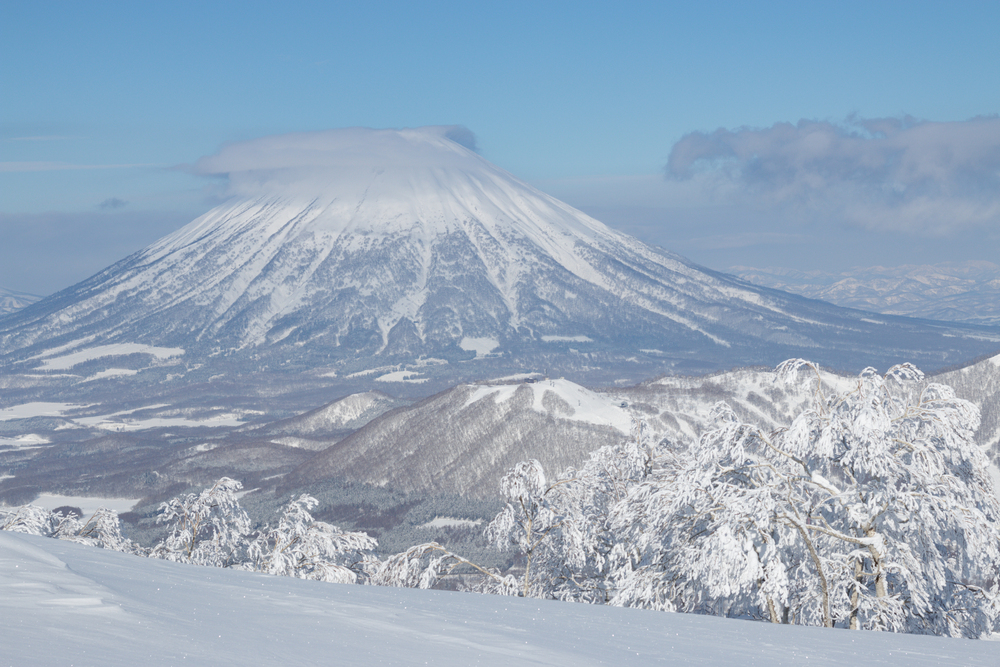
Known as the ‘Mount Fuji of Hokkaido,’ this volcanic giant rises from Hokkaido’s powder-snow paradise like a perfectly crafted ice cream cone. Its symmetrical shape creates natural wind patterns that deposit snow in mesmerizing layers, building up what locals call the ‘white wedding cake’ effect throughout winter.
Backcountry skiers from around the world make pilgrimages here, drawn by stories of unbelievable powder snow that can reach depths of up to 66 feet in some areas. The mountain’s unique position allows it to catch snow from both the Sea of Japan and the Pacific Ocean, creating some of the lightest, driest powder snow found anywhere on Earth.
On clear winter mornings, steam can sometimes be seen rising from its crater, a reminder that this sleeping giant is merely dormant, not extinct.
Like Travel Pug’s content? Follow us on MSN.
Mount Asahi
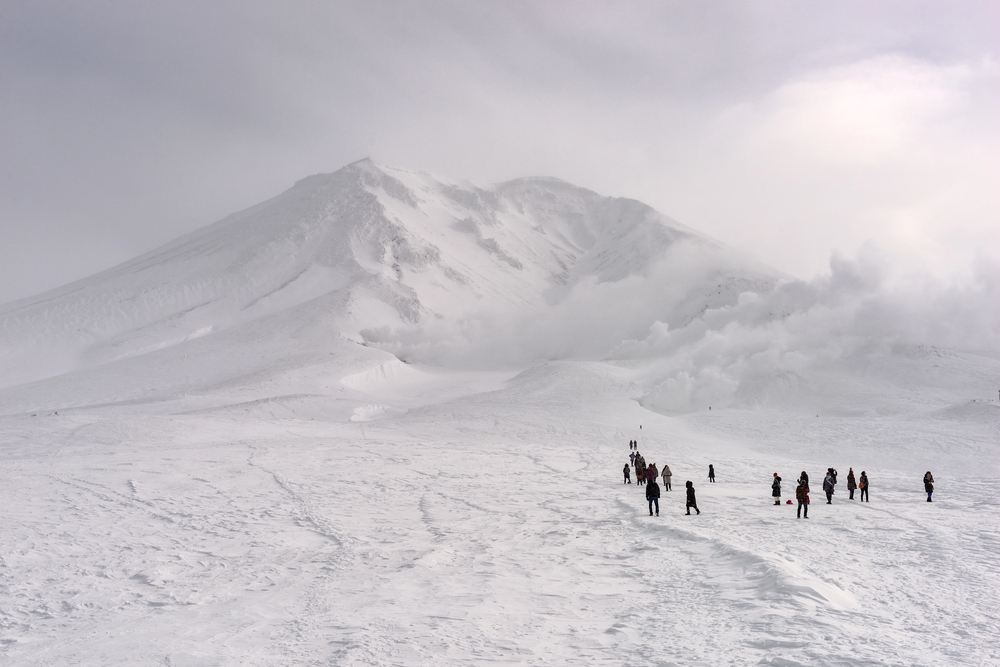
The highest peak in Hokkaido stands as the crown jewel of the Daisetsuzan range, its name literally meaning ‘morning sun mountain.’ During winter, temperatures here can plummet to some of the lowest in Japan, creating ice formations that local guides poetically call ‘winter flowers.’
The mountain’s unique ecosystem hosts rare alpine plants that have adapted to survive under feet of snow, bursting into life during the brief summer window. Indigenous Ainu people considered this peak the ‘playground of the gods,’ and watching the interplay of light and snow across its ridges, it’s easy to understand why.
The mountain’s slopes create their own weather patterns, sometimes hiding completely in clouds before revealing themselves in sudden, dramatic clearings that leave viewers speechless.
Mount Tsurugi
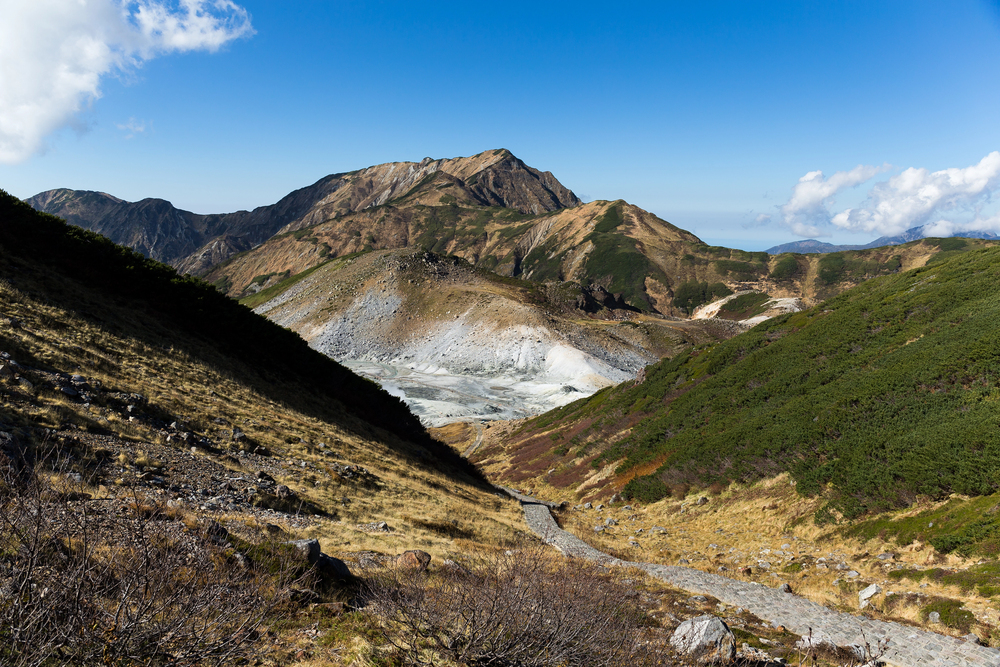
The ‘Sword Mountain’ of Toyama Prefecture earns its name from its sharp, blade-like ridge that seems to cut through winter clouds. Ancient samurai believed this mountain held mystical properties that could strengthen their blades, leading to centuries of sword-making traditions in nearby villages.
Its northern face holds one of Japan’s largest remaining glaciers, a remnant of the ice age that scientists study to understand climate patterns. Local folklore tells of mysterious lights seen dancing around the peak during winter storms, though modern climbers attribute these to unique atmospheric conditions created by the mountain’s metallic deposits.
The peak’s distinctive shape creates wind patterns that sculpt snow into massive cornices, drawing winter alpinists from across the globe.
Mount Haku
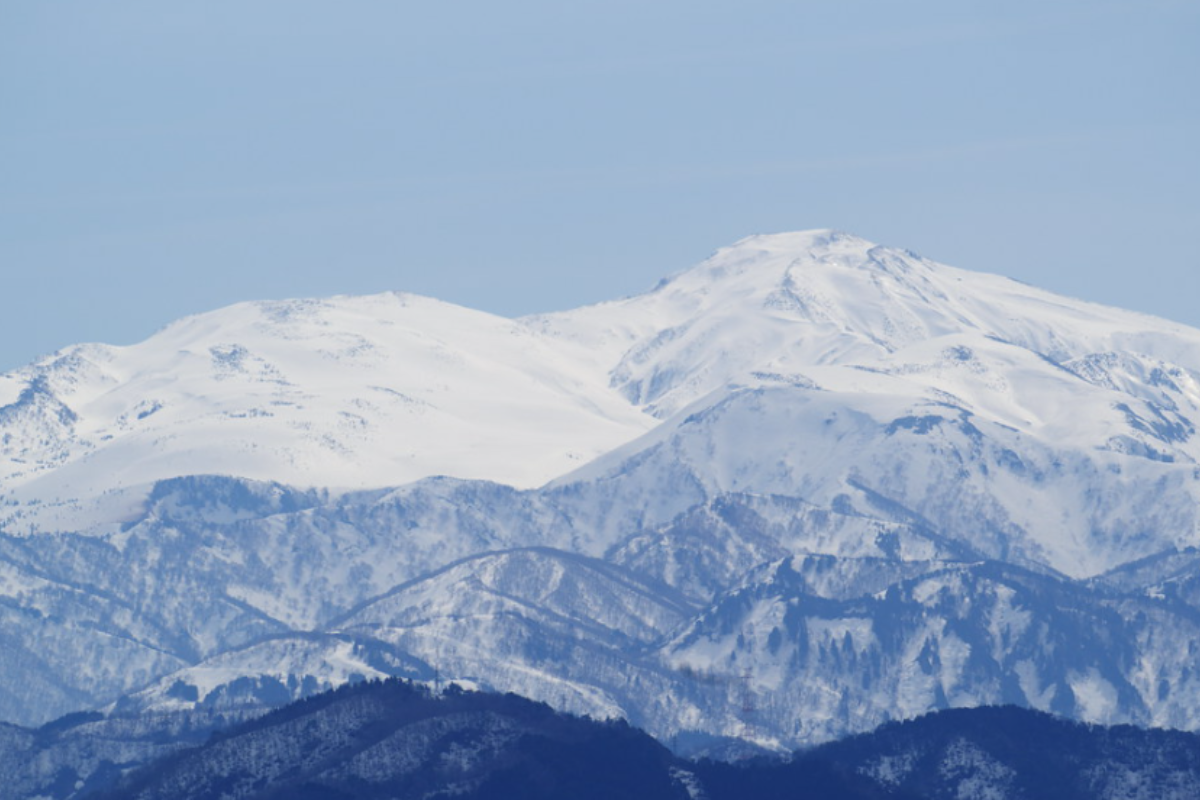
One of Japan’s three sacred mountains transforms into a white giant each winter, its slopes collecting some of the heaviest snowfall in central Japan. Traditional mountain priests still perform ceremonies here during the winter months, continuing practices that date back over a thousand years.
The mountain’s name, meaning ‘white,’ takes on special significance when snow transforms its autumn colors into a monochromatic masterpiece. The peak creates its own ecosystem where rare alpine plants survive under feet of snow, protected from harsh temperatures by their white blanket.
Local communities time their traditional events by the pattern of snow accumulation on the mountain’s slopes, a calendar that’s served them for generations.
Like Travel Pug’s content? Follow us on MSN.
Mount Ontake

Japan’s second-highest volcano becomes a realm of ice and steam during winter months, where thermal vents create surreal snow sculptures. Traditional pilgrims still climb its slopes in winter, following paths marked by centuries-old stone monuments now draped in snow.
The mountain’s volcanic activity creates unique ice formations around its vents, where super-heated steam meets sub-zero air temperatures. Local guides have mapped hundreds of these ‘snow chimneys,’ each with its own character and story.
The contrast between volcanic steam and winter snow creates otherworldly photography opportunities that draw artists from around the world.
Mount Goryu
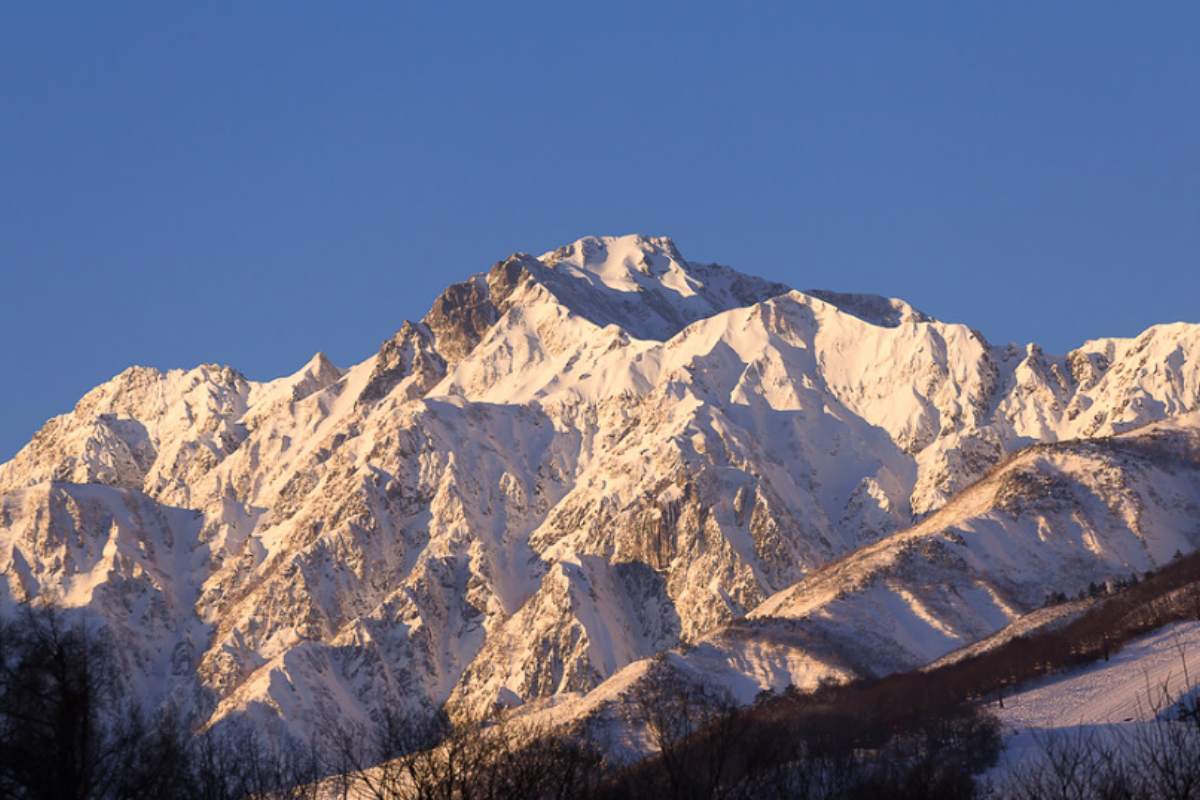
Rising above one of Japan’s premier ski regions, this peak offers views that extend all the way to Mount Fuji on clear winter days. Its unique geological composition creates natural half-pipes and bowls that collect some of the country’s finest powder snow.
Local farmers time their spring planting by the pattern of snow melt on its slopes, a practice that’s continued unbroken for centuries. The mountain’s name comes from an ancient Chinese legend about a dragon ascending to heaven, and watching winter clouds swirl around its peak, it’s easy to imagine why.
Evening alpenglow on its snow-covered face creates colors that local artists have spent generations trying to capture.
Mount Myōkō
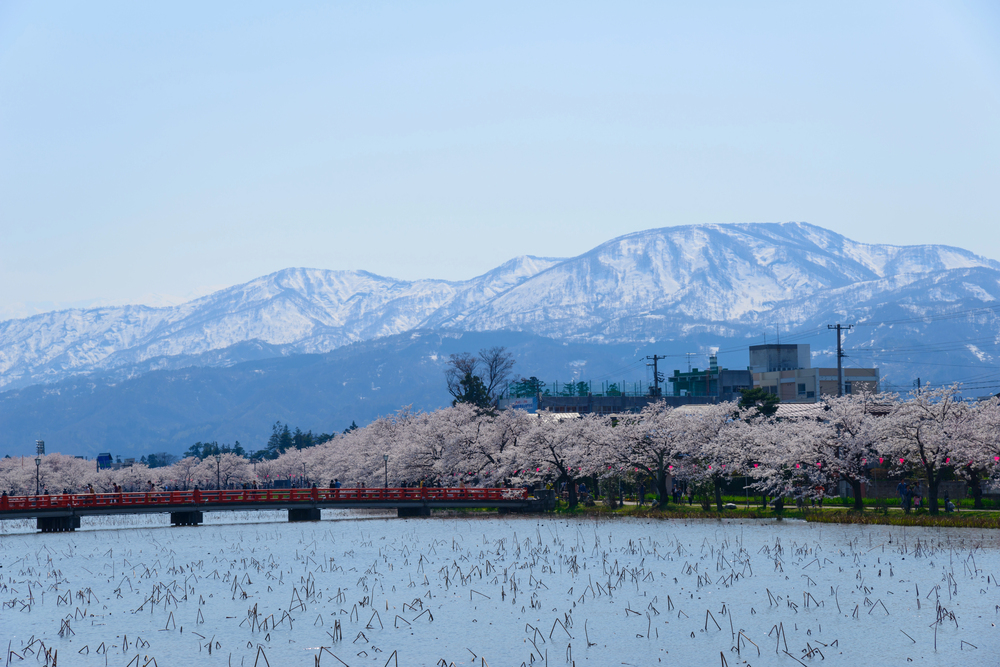
This ancient volcano holds the record for some of Japan’s deepest snow accumulations, with annual depths that can exceed 52 feet. Its perfect conical shape creates natural ski runs that helped birth Japan’s ski industry in the early 20th century.
The mountain’s base supports unique beech forests that have adapted to survive these massive snow loads, creating tunnel-like passages beneath the snowpack. Traditional hunters still track animals through these snow tunnels, following practices passed down through generations.
The peak’s position relative to the Sea of Japan makes it one of the first mountains to receive winter storms, creating legendary powder conditions.
Like Travel Pug’s content? Follow us on MSN.
Mount Nantai
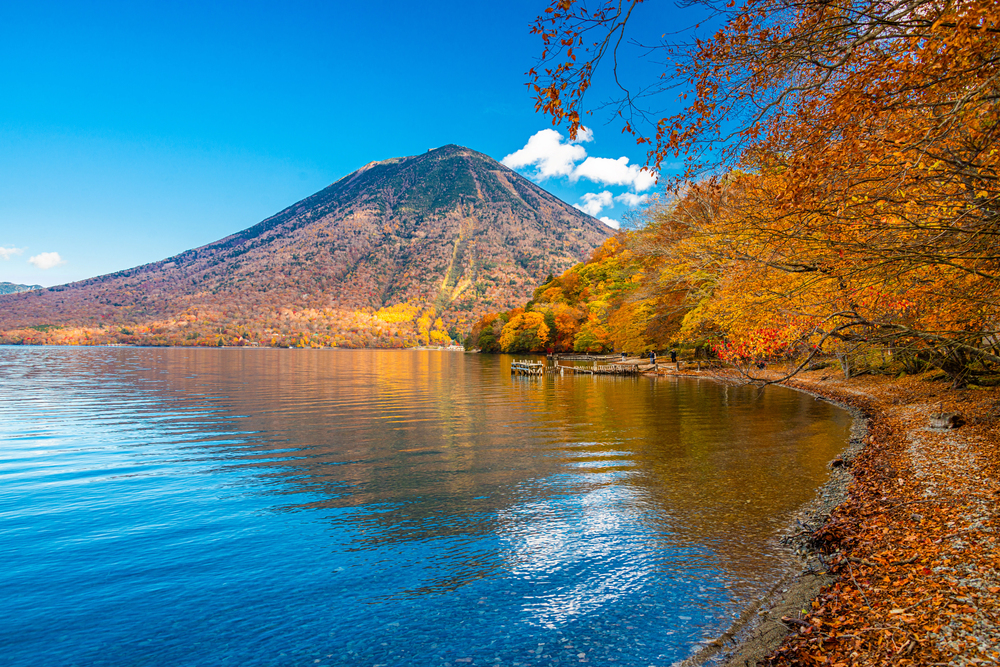
Sacred to the Nikko region, this solitary peak transforms into a white pyramid each winter, reflecting the morning sun across Lake Chuzenji. Ancient mountain ascetics would climb its snow-covered slopes as a test of spiritual strength, a tradition that continues with modern winter climbers.
The mountain’s distinctive shape creates unique weather patterns that sometimes cloak it completely in clouds before revealing it suddenly in dramatic clearings. Local shrine maidens still perform ceremonies at its base during the winter months, maintaining traditions that predate written history.
The contrast between its snow-covered slopes and the unfrozen waters of Lake Chuzenji creates photography opportunities that capture both power and serenity.
Mount Zao

Famous for its ‘snow monsters’ – trees completely encased in wind-blown snow and ice – this peak creates winter landscapes that seem almost alien. The unique combination of moisture-laden winds and freezing temperatures transforms everyday conifers into towering white sculptures that can reach heights of 15 feet.
Traditional hot spring baths at its base offer surreal views of these ice formations illuminated at night. The mountain’s volcanic activity maintains areas of unfrozen ground even in the depths of winter, creating stunning contrasts between steam vents and snow fields.
Local guides have mapped hundreds of these snow monsters, giving names to particularly distinctive formations that return year after year.
Mount Tanigawa

Known as the ‘mountain of death’ due to its challenging winter conditions, this peak’s snow-covered face has earned the respect of climbers worldwide. Its unique position catches weather systems from multiple directions, creating some of Japan’s most complex and beautiful ice formations.
The mountain’s steep granite faces collect snow in patterns that local climbers use to predict avalanche conditions; knowledge passed down through generations. During certain winter conditions, wind-carved snow features create natural amphitheaters that amplify the mountain’s legendary winter sounds.
The peak has inspired countless poems and paintings attempting to capture its fierce winter beauty.
Like Travel Pug’s content? Follow us on MSN.
Mount Ibuki
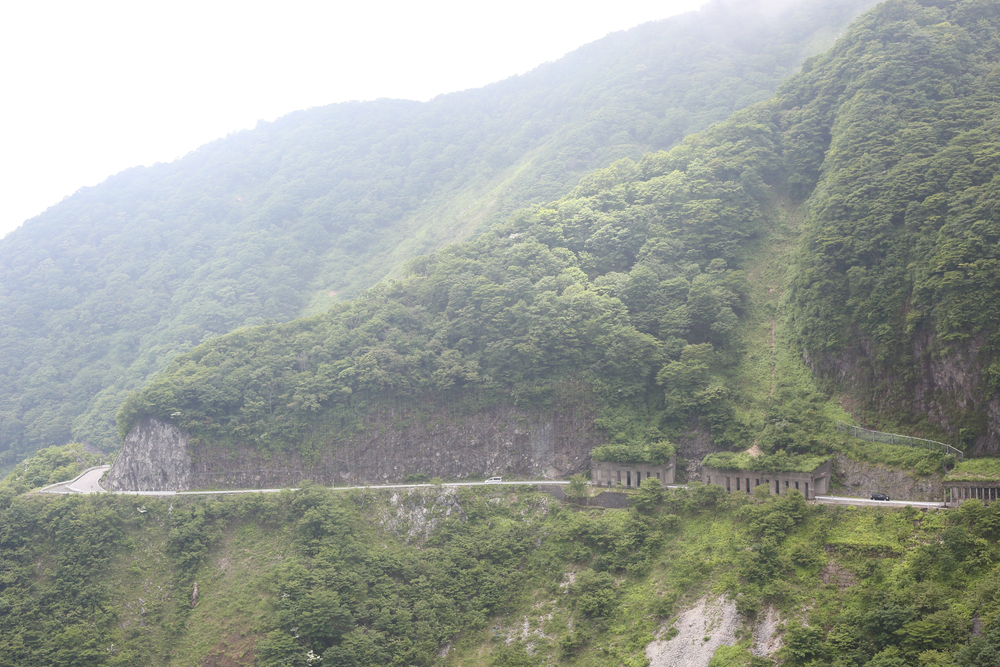
The highest peak in western Japan’s Shiga Prefecture becomes a white giant each winter, collecting massive snowdrifts that can persist into early summer. Its broad summit plateau creates unique wind patterns that sculpt snow into waves and ripples resembling a frozen ocean.
The mountain hosts rare alpine plants that have adapted to survive both heavy snow loads and strong winds, creating miniature gardens beneath the snow. Traditional herbalists still harvest medicinal plants from its slopes, timing their collections by the pattern of snowmelt.
Local festivals celebrate the mountain’s role as a water source; its winter snows feed the rivers that sustain communities below.
Mount Daisen
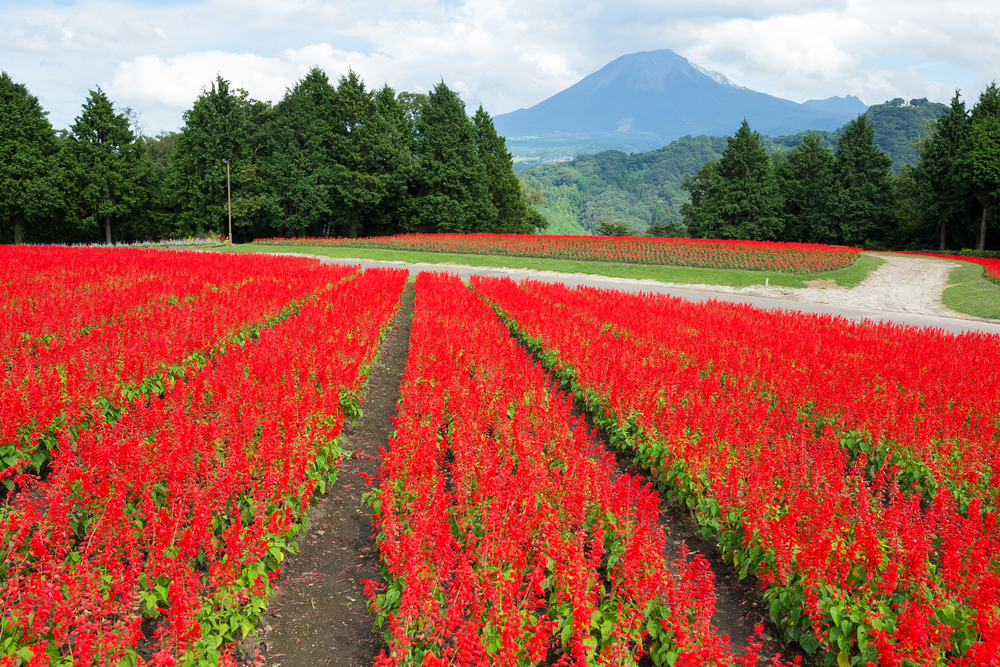
Often called the ‘Mount Fuji of Western Japan,’ this peak’s symmetrical cone collects snow in perfectly graduated layers throughout winter. Ancient Buddhist temples at its base maintain traditions of winter meditation, their monks drawing inspiration from the mountain’s serene white form.
The peak’s isolation creates unique weather patterns where clouds can suddenly part to reveal stunning views across the Sea of Japan. Local photographers have documented how its appearance changes with different snow conditions, creating a visual calendar of winter.
The mountain’s snow patterns influence local farming practices, with traditional agriculture timed to the rhythm of its seasonal changes.
Mount Yakushi

This sacred peak in the Northern Alps becomes a realm of pure white during winter, its Buddhist temples and shrines completely buried in snow. The mountain’s name, meaning ‘medicine Buddha,’ reflects ancient beliefs about its healing properties, particularly during the winter months.
Its unique topography creates vast snow fields that local guides call ‘white seas,’ where the horizon seems to disappear on cloudy days. The peak holds some of Japan’s most enduring snowfields, with patches sometimes surviving through summer in protected gullies.
Traditional pilgrims still visit its snow-covered shrines, maintaining practices that blend Buddhist and local mountain beliefs.
Like Travel Pug’s content? Follow us on MSN.
Mount Akaishi
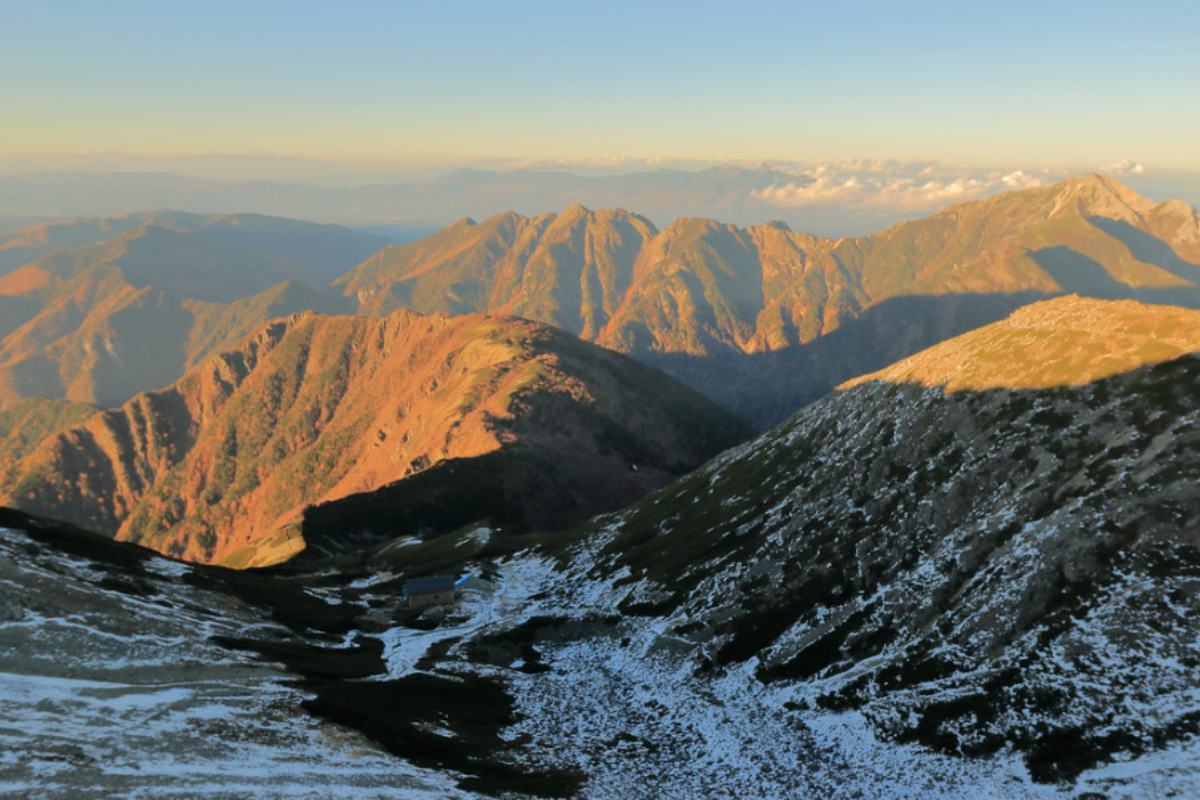
The ‘Red Stone Mountain’ transforms into a white giant each winter, its distinctive rock hidden beneath feet of snow. Its position in the Southern Alps creates some of Japan’s most dramatic winter alpenglow effects, turning the snow in various shades of pink and orange at sunrise and sunset.
The mountain’s steep faces create natural snow accumulation zones that local climbers have mapped over generations. Traditional hunters still track animals across its snow-covered slopes, reading stories in the tracks that cross its white canvas.
The peak’s unique geology influences how snow accumulates, creating distinctive patterns that locals use to predict weather changes.
Mount Hotaka
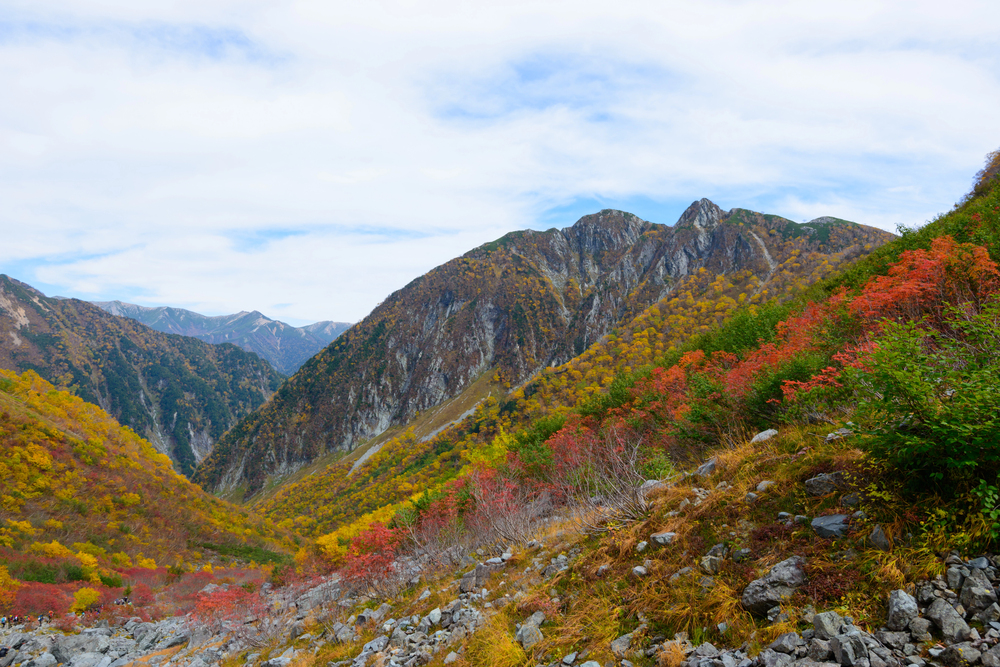
The highest peak in the Northern Alps becomes a gathering place for ice climbers each winter, its frozen waterfalls creating natural sculptures. Its name comes from ancient legends of dragons that were said to inhabit its peaks, and watching winter storms swirl around its summit, it’s easy to imagine why.
The mountain’s complex ridge system creates dozens of unique microclimates, each with its own snow and ice characteristics. Local guides have documented hundreds of ice formations that form in the same places year after year, each with its own name and story.
The peak’s height and position make it one of the first places in Japan to receive winter storms, creating legendary climbing conditions.
Mount Kasa
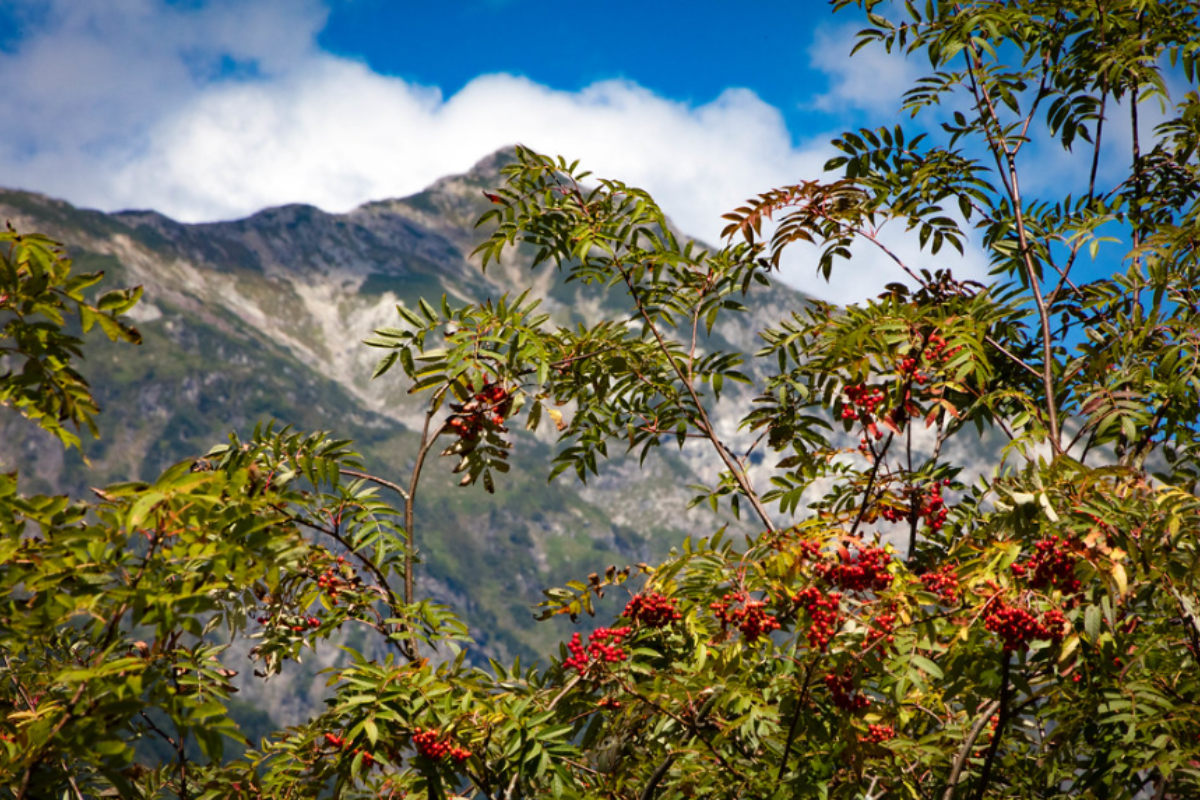
This distinctive flat-topped peak collects snow like an upturned bowl, creating unique winter landscapes that draw photographers from across Japan. Its broad summit plateau hosts rare arctic-alpine plants that survive under feet of snow, bursting into life during the brief summer window.
The mountain’s shape creates unusual wind patterns that sculpt snow into forms local artists have spent generations trying to capture. Traditional stories tell of mountain spirits that gather on its summit during winter storms, and watching the interplay of wind and snow, it’s easy to understand why.
Local communities time their winter festivals to the changing appearance of their snow-covered profile.
Like Travel Pug’s content? Follow us on MSN.
Mount Yake

Japan’s most active volcano offers a stunning contrast of fire and ice during winter months when snow meets thermal vents. The mountain’s name, meaning ‘burning mountain,’ takes on special significance when steam rises through snow-covered vents, creating ethereal scenes in the winter light.
Its volcanic activity maintains snow-free zones even in the depths of winter, creating unique environments where specialized organisms thrive. Local guides have mapped these thermal areas carefully, creating routes that showcase the mountain’s dual nature.
The peak’s activity influences snow conditions in unique ways, creating areas where winter climbers can experience both ice and steam within feet of each other.
Mount Shibutsu
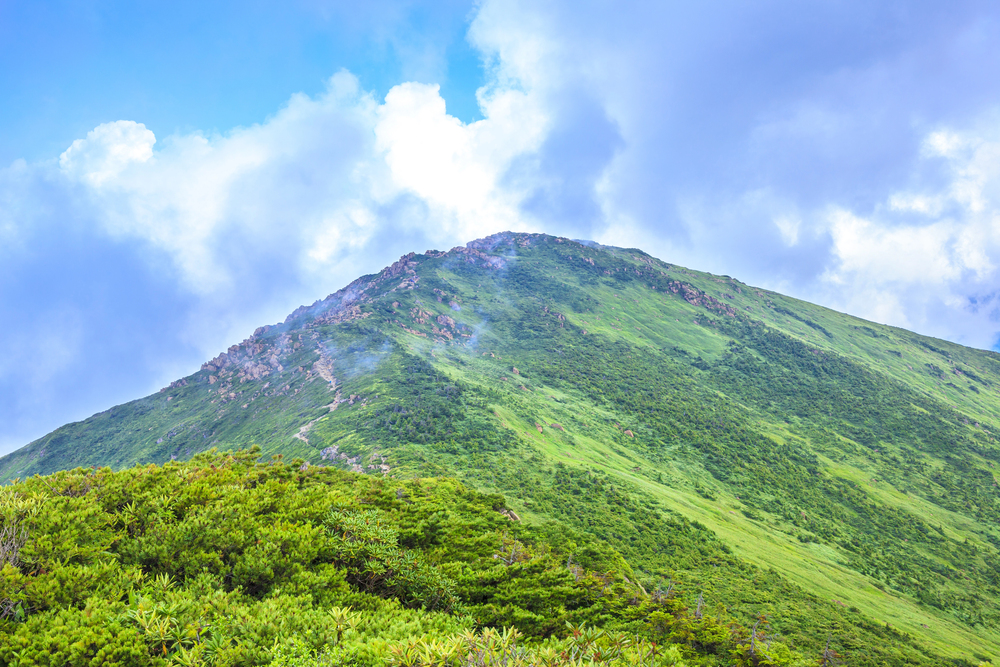
One of Japan’s hundred famous mountains transforms into a white wilderness each winter, its distinctive rock formations completely altered by snow. The peak’s isolated position creates unique weather patterns where clouds can suddenly part to reveal panoramic views across central Japan.
Traditional mountain priests considered this peak particularly sacred during winter months when its white covering seemed to connect earth and heaven. Local communities still time their agricultural preparations by the pattern of snow melt on its slopes, following practices that date back centuries.
The mountain’s unique shape creates natural snow collection areas that local skiers have mapped over generations.
Mount Jōnen
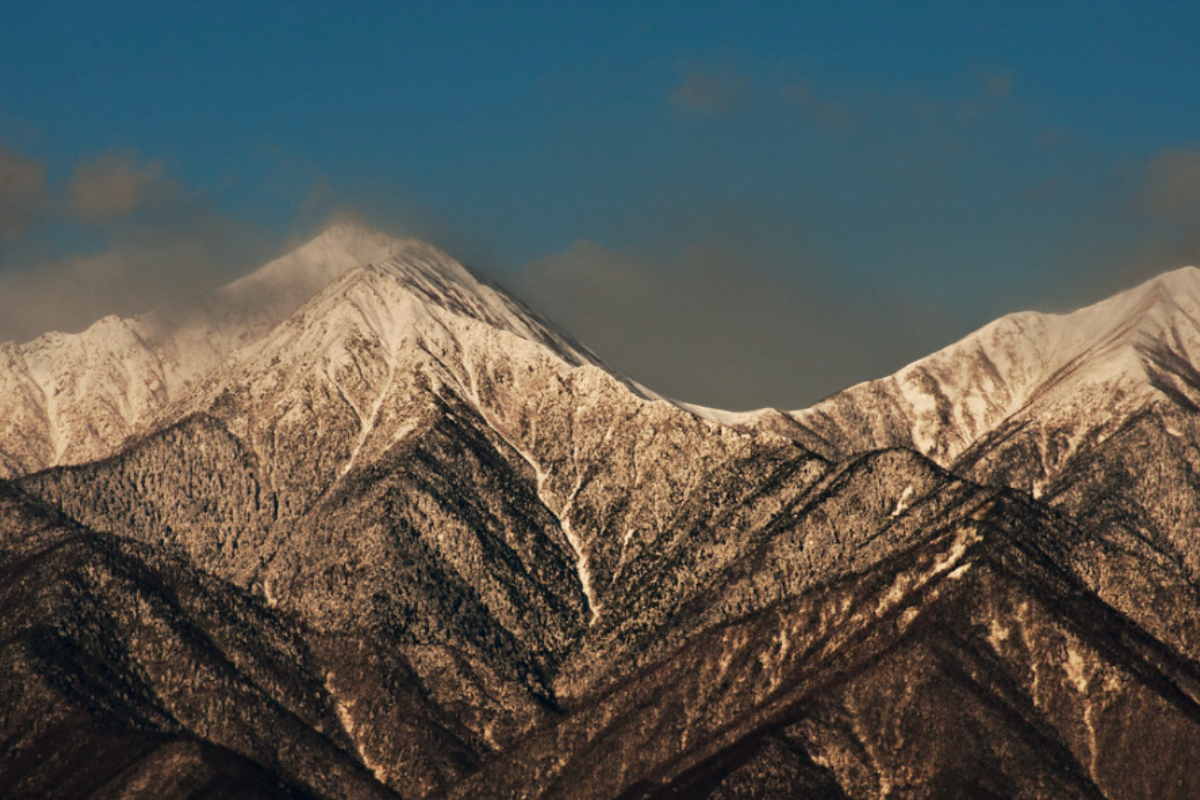
The ‘Queen of the Northern Alps’ becomes even more regal when wrapped in her winter white, creating some of Japan’s most photographed winter landscapes. Its distinctive spires collect snow in ways that create natural sculptures, changing throughout the winter as winds reshape them.
The mountain’s position creates unique cloud formations that local weather watchers use to predict incoming storms. Traditional beliefs hold that the peak’s winter appearance can predict the following summer’s weather patterns, a practice modern meteorologists have found holds surprising accuracy.
Local artists have documented its changing winter faces for generations, creating a unique record of climate patterns.
Like Travel Pug’s content? Follow us on MSN.
Japan’s Timeless Snowy Peaks
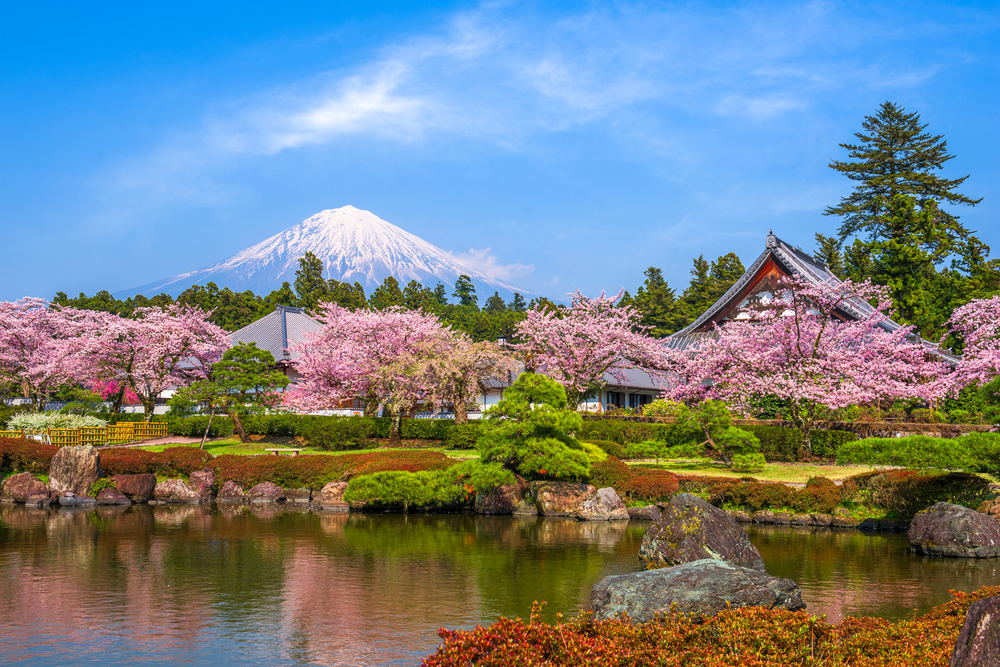
These snow-covered peaks represent more than just stunning winter scenery; they’re living museums of Japan’s natural and cultural heritage. As climate change threatens to alter snow patterns and traditional mountain lifestyles, these winter landscapes become even more precious. Local communities around these mountains are working to balance preservation with accessibility, ensuring future generations can experience these breathtaking views.
Their efforts remind us that these peaks are not just mountains but bridges between earth and sky, past and present, humanity and nature. The snow that caps these mountains every winter tells a story as old as Japan itself, one that continues to captivate and inspire all who witness it.
More from Travel Pug

- 15 Dangerous European Cities to Avoid
- 15 Caribbean Islands Where Tourists Keep Getting Scammed
- The 20 Most Fascinating Abandoned Places: A Journey Through Time and Forgotten Spaces
- 15 Hidden Places in the Smithsonian Museums Locals Love: A Guide to Lesser-Known Treasures
- 16 Hidden Florida Beach Towns That Aren’t Overrun with Tourists
Like Travel Pug’s content? Follow us on MSN.
